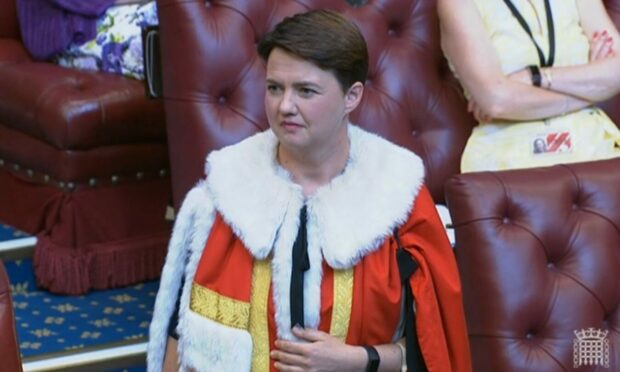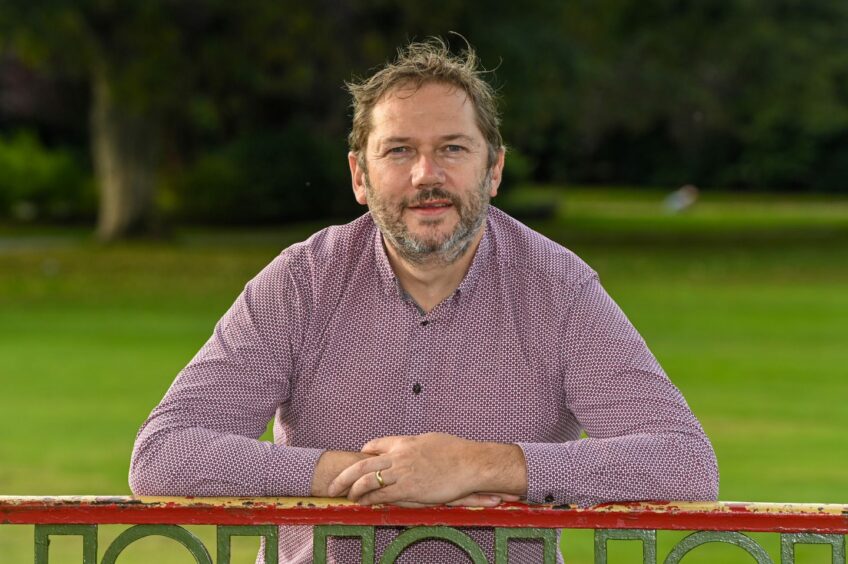Former Scottish Tory leader Ruth Davidson has slammed the Conservative government’s decision to privatise broadcaster Channel 4.
Ms Davidson, who started in broadcasting at Kingdom FM before entering politics, took a swipe at her UK colleagues, saying the move is “the opposite of levelling up”.
The so-called levelling up agenda is a key policy pushed by Boris Johnson and ministers such as Michael Gove.
They say it demonstrates how parts of the UK outwith London can benefit from investment in the economy.
Ms Davidson, who sits in the House of Lords as a Conservative peer, said the current way the channel operates supports independent television makers in Scotland.
She said: “Channel 4 is publicly owned, not publicly funded.
“It doesn’t cost the taxpayer a penny.”
Channel 4 is publicly owned, not publicly funded. It doesn't cost the tax payer a penny. It also, by charter, commissions content but doesn't make/own its own. It's one of the reasons we have such a thriving indy sector in places like Glasgow. This is the opposite of levelling up
— Ruth Davidson (@RuthDavidsonPC) April 5, 2022
She continued: “It’s one of the reasons we have such a thriving indy sector in places like Glasgow.
“This is the opposite of levelling up.”
Ms Davidson worked at Kingdom FM in Fife and BBC Scotland before entering politics.
Conservative MSP for the North East Douglas Lumsden was among other party figures supporting Ms Davidson’s view.
He added on social media: “This could be a damaging blow to the thriving independent TV sector in Scotland.”
Why is Channel 4 being privatised?
Channel 4 is currently owned by the UK Government but is funded through advertising rather than by the taxpayer.
The UK Department for Digital, Culture, Media and Sport said it has made the decision to privatise the channel to allow it to “thrive in the face of a rapidly-changing media landscape”.
UK Government culture secretary Nadine Dorries said government ownership was “holding Channel 4 back from competing against streaming giants like Netflix and Amazon”.
‘Disappointed’
Channel 4 said it is “disappointed” at the decision.
The channel’s chief executive, Alex Mahon, wrote to staff shortly after the announcement saying the sell could take as little as 18 months.
The channel could fetch up to £1 billion but its sale will still need to be approved by MPs and peers at Westminster.
It is understood the channel presented the government with an alternative to privatisation, and now says it will do everything it can to “ensure that Channel 4 continues to play its unique part in Britain’s creative ecology and national life”.
Tory backlash to decision
The announcement has already generated a fierce backlash amongst politicians and the television industry.
Former Culture Secretary Jeremy Hunt told Sky News: “I’m not in favour of it because I think that as it stands, Channel 4 provides competition to the BBC on what’s called public service broadcasting – the kinds of programmes that are not commercially viable – and I think it’d be a shame to lose that.”
Scottish Lib Dem leader Alex Cole-Hamilton said it is “shameful”.
Channel 4 is publicly owned not publicly funded- it doesn’t cost us. Privatisation will threaten its independence and potentially bend it to the will of new owners eg the likes of Murdoch, Lebedev or whoever else devours it. This is shameful. https://t.co/aa1UsnYuzr
— Alex Cole-Hamilton MSP🔶🇺🇦 (@agcolehamilton) April 5, 2022
Russell T Davies, writer of the award-winning programme It’s A Sin, said privatising Channel 4 would be a “great crime” that would result in programmes like his not being made.
However, supporters include the channel’s former chief executive Baron Grade of Yarmouth who said “the status quo is not an option”.
In 2021 he told the House of Lords’ communication and digital committee: “Channel 4 needs to do what every other free-to-air advertiser-supported business is doing, which is to own its own IP and to be able to gain scale.
“Everything in the Channel 4 constitution presently is against that and therefore it will, in my view, in a very short time really begin to struggle.”


